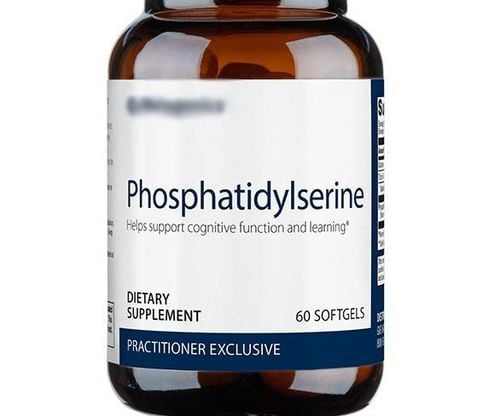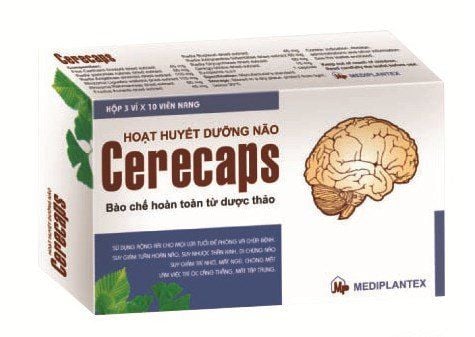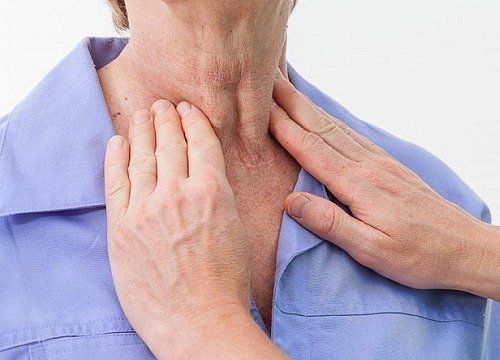This is an automatically translated article.
The article is professionally consulted by Master, Doctor Bui Ngoc Phuong Hoa - General Internal Medicine - Department of Medical Examination & Internal Medicine - Vinmec Danang International General Hospital.Swallowing disorder is a very common sequelae of cerebrovascular accident, in addition to making it difficult for patients to eat and drink, swallowing disorders can cause dangerous complications such as aspiration, pneumonia, difficulty breathing and may lead to complications. may lead to death. Early detection of swallowing disorder in cerebrovascular accident and timely treatment helps patients limit complications, swallowing function and eating ability can be restored soon.
1. Swallowing disorder in cerebrovascular accident
1.1. What is a swallowing disorder? Swallowing is an active and automatic process, in which there is a coordination of many muscle groups to push food from the mouth to the stomach, swallowing physiology is divided into four stages. The first stage is the preparation stage, which includes activities of biting, chewing, grinding food, kneading food with saliva to make food soft and pure.The second stage is the oral phase, food will stimulate the swallowing sensory area around the nasopharynx, on the amygdala columns, the impulse will follow the sensory fibers of the V and IX nerves to the swallowing center. in the medulla oblongata. The tongue will push food and drink back to put it into the pharynx.
In the pharyngeal stage, the soft palate is pulled upward to close the posterior nostril to prevent food reflux into the nasal cavity, the almond columns are pulled in the middle to form a longitudinal slit to allow food to enter the posterior pharynx and prevent too large food to pass through. The vocal cords are close to each other, the larynx is pulled up in front of the neck muscles, this is a movement that helps to widen the esophageal opening and make the ligaments pull the epiglottis to cover the glottis, not allowing the vocal cords to be closed. Food or drink enters the trachea. The pharynx wall constricts, pushing food from the pharynx into the esophagus. The last stage is the esophageal phase, the peristaltic waves are controlled by nerves IX, X, Auerbach's plexus, which will bring food from the pharynx to the stomach.
If a disorder occurs at any stage in the swallowing process, it will lead to a swallowing disorder. Swallowing disorder will make it difficult for food and water to enter the stomach and (or) a part of the food will leak out of the esophagus into the nose and trachea, causing many dangerous complications for the patient.
1.2. Complications of swallowing disorder in cerebrovascular accident Swallowing disorder is a common sequelae of cerebrovascular accident, up to 52% of patients have swallowing disorder after acute cerebral stroke. One week after stroke, swallowing disorders occur in 25-30% of patients and after 6 months in 11-50% of patients.
Common complications when food or drink gets into the trachea is aspiration, the patient will have coughing, bronchospasm, difficulty breathing, which can lead to death. Up to 43-54% of patients after acute cerebral stroke have aspiration, 30% of patients aspiration will lead to pneumonia. Aspiration pneumonia kills 3-6% of patients within the first year. Other complications of swallowing disorders are weight loss, dehydration, malnutrition, changes in eating habits, depression and reduced social integration.
2. Signs to help detect swallowing disorder in cerebrovascular accident
If the patient is hospitalized, swallowing disorder will be detected by the doctor by checking the muscles of the pharynx, tongue, performing the GUSS (Gugging Swallowing Screen) test, MASA score, diagnostic interventions such as: flexible bronchoscopy, oral X-ray, video recording or assessment of capillary oxygen saturation...If the patient is being cared for at home, the patient may be suffering from a swallowing disorder as a sequelae of a stroke. If the following signs appear:
While eating and drinking, food and water in the mouth flow out, spilling food. Patients often have salivation, saliva accumulates in the mouth. Difficulty in biting, chewing, moving food with the tongue, holding food for a long time, having to exert effort when swallowing, and still seeing food stuck in the throat when swallowing. The patient coughs or chokes when swallowing. Frequent coughing while chewing, not swallowing, when swallowing, and for a long time after swallowing. The patient has a change in voice and speaking speed after eating. Having repeated pneumonia, unexplained weight loss, change in eating habits. Due to dangerous complications that can be life-threatening, if the patient is suspected of having a swallowing disorder after a cerebrovascular accident, family members should quickly take the patient to medical facilities for examination and treatment. early recovery of swallowing function.
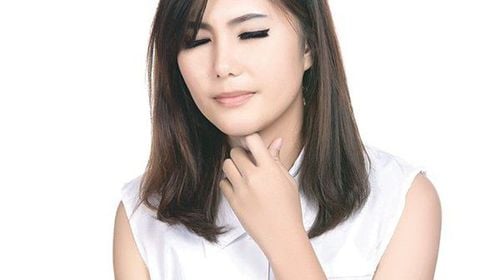
3. Methods of rehabilitation for swallowing disorders in cerebrovascular accident
To restore swallowing function for patients after a stroke, depending on the condition of each patient, doctors can apply methods such as compensatory techniques, performing exercises to help restore function, and treat by invasive procedures or drug therapy.3.1. Compensatory techniques These are techniques that provide immediate improvement and safety when the patient swallows, but the effect is only temporary, not long-term. Compensatory techniques include movements to perform when swallowing such as:
Tilting the chin before swallowing, the patient is in a sitting or semi-sitting position. This movement helps to reduce the distance between the epiglottis and the pharyngeal septum, making the epiglottis more closed. Turn to the paralyzed side when swallowing, the movement helps to shift food to the side without sequelae of cerebrovascular accident. pressure on the lateral wall of the larynx. Tilt the head to the healthy side, helping to use the gravity of the food to push the food to the side of the mouth, so as not to have a stroke. In addition, the compensatory technique also includes exercises to increase awareness of salty, sweet, hot, and cold sensations to stimulate the swallowing reflex. These techniques are beneficial if the patient's swallowing disorder occurs in the oral stage.
3.2. Exercises to help restore swallowing function Patients will be trained in tongue movements and pronunciation exercises to help increase the strength and durability of the muscles of the lips and tongue. Swallowing exercises, jaw thrusting exercises, swallowing exercises with swallowing stimulation, muscle groups that support swallowing, ... help to clean the throat and reduce the backlog of food and saliva in the mouth. These exercises, if performed for a period of time, help improve and restore the ability to swallow effectively, patients can switch from eating with a nasogastric tube to eating completely by mouth.
3.3. Invasive treatment procedure If the sequelae of cerebrovascular accident cause the patient to have severe swallowing dysfunction, oropharyngeal paralysis and unable to eat and drink, the patient will be prescribed enteral feeding by placing mouth-stomach tube, naso-gastric tube or percutaneous gastrostomy by endoscope,... When the patient eats through the tube, the family should pay attention to puree liquid food, adjust the feeding speed suitable and after each feeding, it is necessary to pump warm water into the sonde to clean the catheter and avoid bacteria.
When aspirating a foreign body, the patient can be treated with surgical procedures such as cutting the cricopharyngeal muscle, bringing the vocal folds in the middle, creating flaps to close the glottis, redirecting the trachea-oesophagus, ..
3.4. Drug therapy Patients may be prescribed Atropin to reduce salivation, however, the drug aggravates the patient's dysphagia.
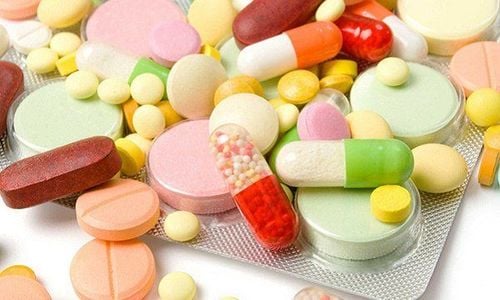
4. Notes when taking care of patients with swallowing dysfunction due to sequelae of cerebrovascular accident
The patient's food should be cooked soft, chopped or pureed if the patient has difficulty chewing or swallowing. Avoid foods that are hard, dry, large in size, foods that are easy to stick to teeth and gums. The patient should only eat when awake, eat slowly with small spoonfuls, support if the patient has difficulty opening his mouth, remind if the patient holds food for a long time.When eating, the patient should sit upright, perpendicular at the hips, knees and ankles, feet touching the floor or resting on the platform, do not let the legs hang. If the patient cannot sit, the head of the bed should be adjusted or supported to sit, wedge the pillow so that the patient can eat comfortably and in the correct posture. After eating should sit or walk for about 30 minutes to avoid food reflux. Pay attention to the patient's oral hygiene, if you cannot brush your teeth, you can use tongue gauze and physiological saline to clean.
Stroke is an extremely dangerous disease if not diagnosed in time. If not fatal, a stroke can also leave serious sequelae. Therefore, early screening for stroke is extremely important and necessary.
Currently, Magnetic Resonance Imaging - MRI/MRA is considered a "golden" tool for brain stroke screening. MRI is used to check the condition of most organs in the body, especially valuable in detailed imaging of the brain or spinal nerves. Due to the good resolution and contrast, MRI images allow to detect abnormalities hidden behind bone layers that are difficult to detect with other imaging methods. MRI can give more accurate results than X-ray techniques (except DSA angiography) in diagnosing brain diseases, cardiovascular diseases, strokes,... Moreover, the process MRI scans do not cause the side effects seen in X-rays or computed tomography (CT).
Vinmec International General Hospital currently owns a 3.0 Tesla MRI System, which is equipped with state-of-the-art equipment by GE Healthcare (USA) with high image quality, allowing a comprehensive assessment, without omitting the injury without leaving any damage. and reduce shooting time. Silent technology helps to reduce noise, create comfort and reduce stress for the client during the shooting process, resulting in better image quality and shorter imaging time. With the state-of-the-art MRI system With the application of modern methods of cerebral vascular intervention, a team of experienced and well-trained neurologists and imaging specialists, Vinmec is a prestigious address for stroke risk screening and screening. reliable goods.
In the past time; Vinmec has successfully treated many cases of stroke in a timely manner, leaving no sequelae: saving the life of a patient suffering from 2 consecutive strokes; Responding to foreign female tourists to escape the "death door" of a stroke ;...
Please dial HOTLINE for more information or register for an appointment HERE. Download MyVinmec app to make appointments faster and to manage your bookings easily.






